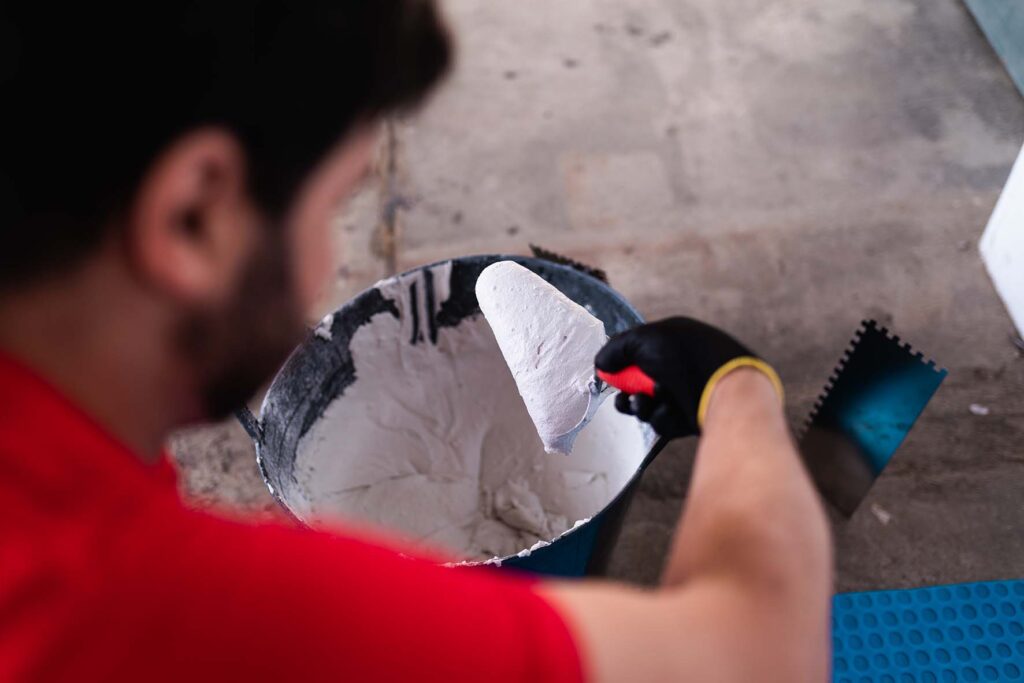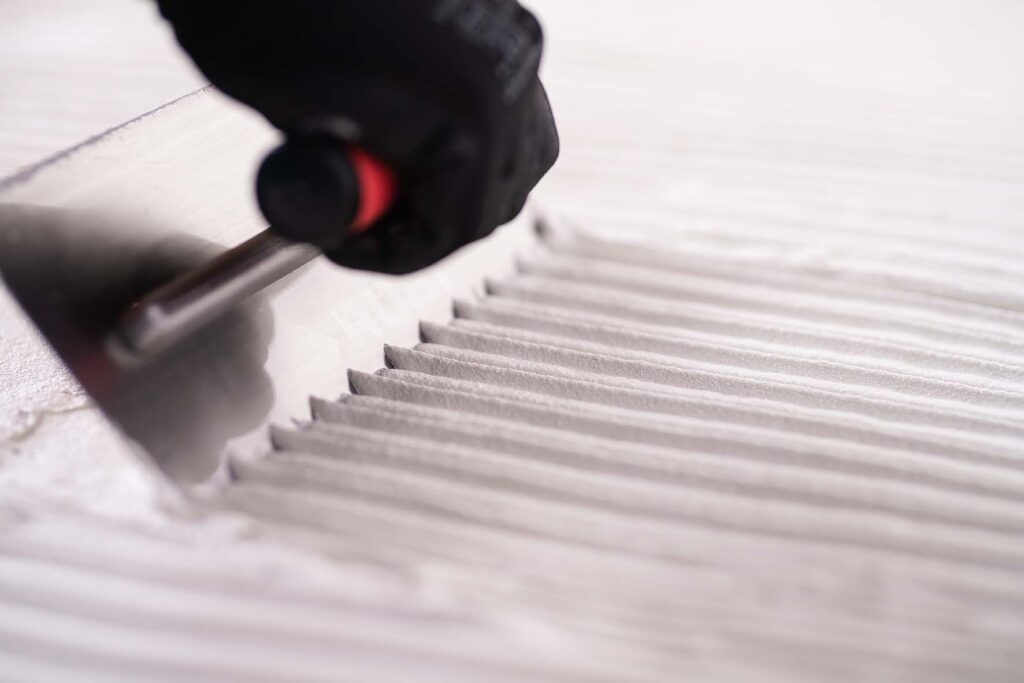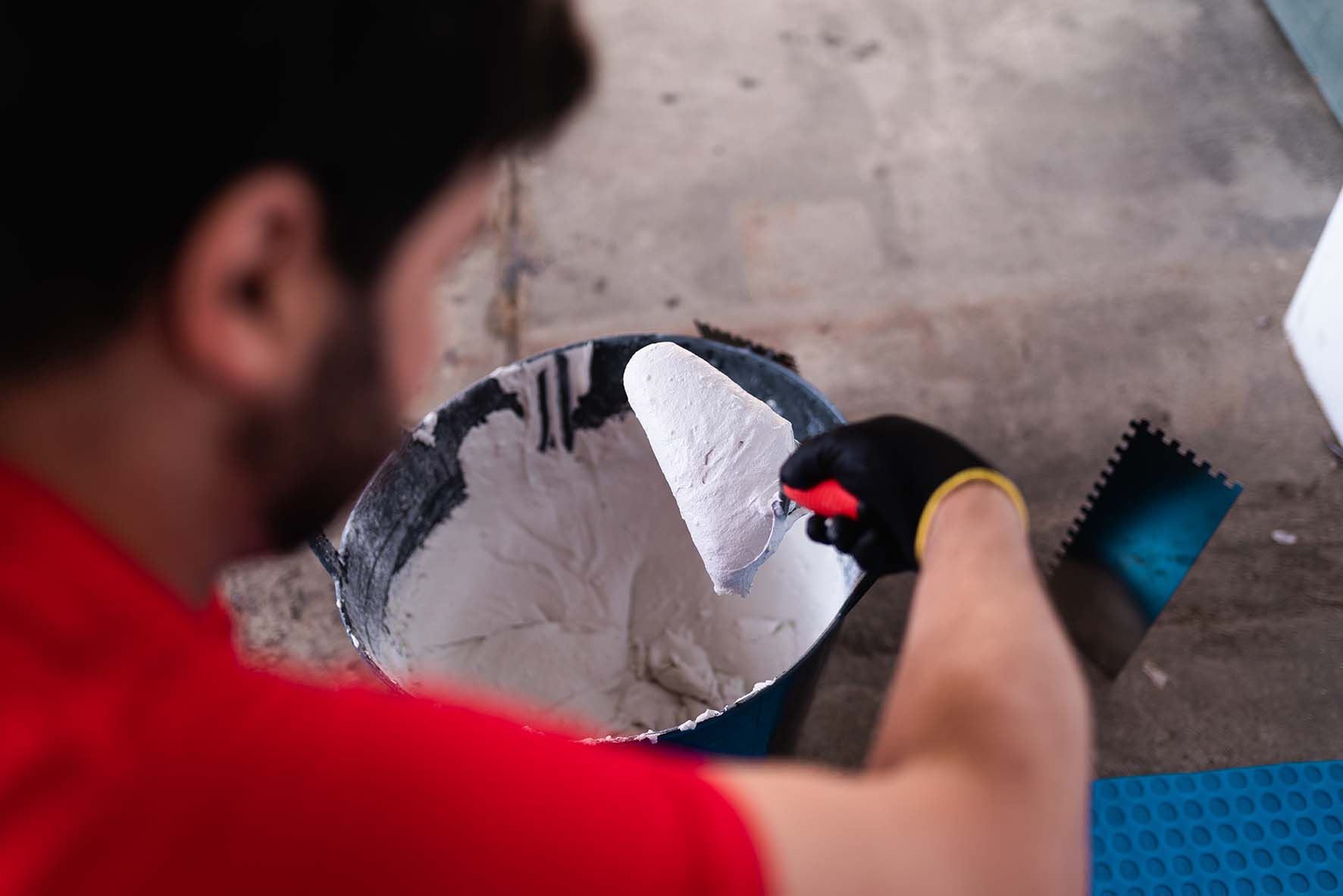When you learn how to tile, one of the most common techniques for waterproofing walls is to use waterproof plaster or waterproof mortar with waterproofing cement.
In this post we are going to see what waterproofing cement is, how to mix it and some application tips.


WHAT IS WATERPROOFING CEMENT?
Waterproofing cement is a cement that prevents the passage of water from the moment of construction and prevents the appearance of damp, preventing the paint on our walls and ceilings from peeling off. It allows us to build and waterproof at the same time.
It can be used for all types of construction work. Mainly those that are exposed to exteriors and humidity, as it protects walls, foundations, and ceilings.
When plastering an exterior wall, it is applied directly on the brick. This creates a first protective barrier to prevent moisture from entering the walls of the house.
The waterproofing cement is specially formulated to do just that, to waterproof walls. However, if we do not mix it well and follow some laying guidelines, we will not achieve its maximum performance. The result may not be as expected.
Everyone in construction knows what waterproofing cement is, but not everyone knows how to mix and apply it correctly. Let’s look at the most important things.

HOW TO MIX WATERPROOFING CEMENT
One of the first mistakes when trying to waterproof walls is a bad use of the preparation of the waterproofing agent. The proportion of sand-cement is 4 to 1. But when we say 1 part cement to 4 parts sand, we are referring to volumes (buckets, cans, etc.) and not to weights.
The water-repellent is a waterproofing additive for cement, which, when incorporated in water, allows the pores of the cement mortar to be blocked, improving its damp-proofing capacity. This is one of the simplest ways to prevent dampness in walls.
In the case of the water repellent or waterproofing there is also a basic ratio that must be respected to mix it with water. Being 1 part waterproofing to 10 parts water. If this ratio (1:10) is not respected, we can have moisture problems in the walls in the future.
The water prepared with the mixture is used to hydrate the cement and sand mixture (1:4). We mix it all with an electric mixer for greater homogeneity, speed and convenience. At RUBI we have various mixers suitable for this task, read more about them here.
APPLICATION TIPS FOR WATERPROOFING CEMENT
When applying the waterproofing cement with a trowel, the layer should be at least 5 to 8 mm thick. A common mistake when spreading the waterproofing cement is to press excessively until it loses its thickness. This is when its waterproofing capacity disappears. This is why we must ensure that we maintain these minimum thicknesses if we want to avoid future damp problems.

In order to spread the waterproofing cement on a wall to insulate it from damp, the mistake is often made of not wetting the walls to be plastered properly. When the cement-sand mixture (1:4) is hydrated, water is primarily responsible for promoting setting. Setting is the chemical reaction that occurs to harden the mortar or cement and give it adequate waterproofing power.
The water in the water-repellent mixture must be present for a prolonged period of time during setting. If it disappears before that time, the mixture “burns”, i.e. it loses its waterproofing power.
HYDRATION OF THE WALLS
If the wall where the waterproofing cement is applied is not properly wetted before plastering, they act as “sponges” absorbing the water from the waterproofing mixture. In this way they cut off the chemical reaction that causes it to harden. The sustained presence of water is essential to produce the chemical reaction that causes the waterproof mortars to set. If they dry out too early, they lose their effect as a moisture insulator.
In other words, if the wall in question is not wetted correctly in terms of time and quantity of water (it is no good using a bottle or a can…), the waterproofing cement plaster will not reach its maximum performance. We will then have to look for solutions to eliminate the damp in the walls further down the line.
If the waterproof mortar (plaster) is not covered immediately with the next layer of thick plaster (no more than thirty minutes later), there is a risk that it will dry out due to wind or exposure to direct sunlight. This is why it is so important not only to cover it with another layer of cement mortar, but also to protect this thick plaster with a good “cure”.
The “curing” consists of keeping the newly plastered walls hydrated. To do this, they should be moistened 3 times a day for at least 3 to 4 days.
This will prevent the thick plaster from cracking as it dries (shrinkage cracks), and prevent these cracks from becoming an access route for moisture coming in from the outside.
Now that you know more about waterproofing cement, how to mix it and apply it, you can now venture into using it with your projects.



Post a comment